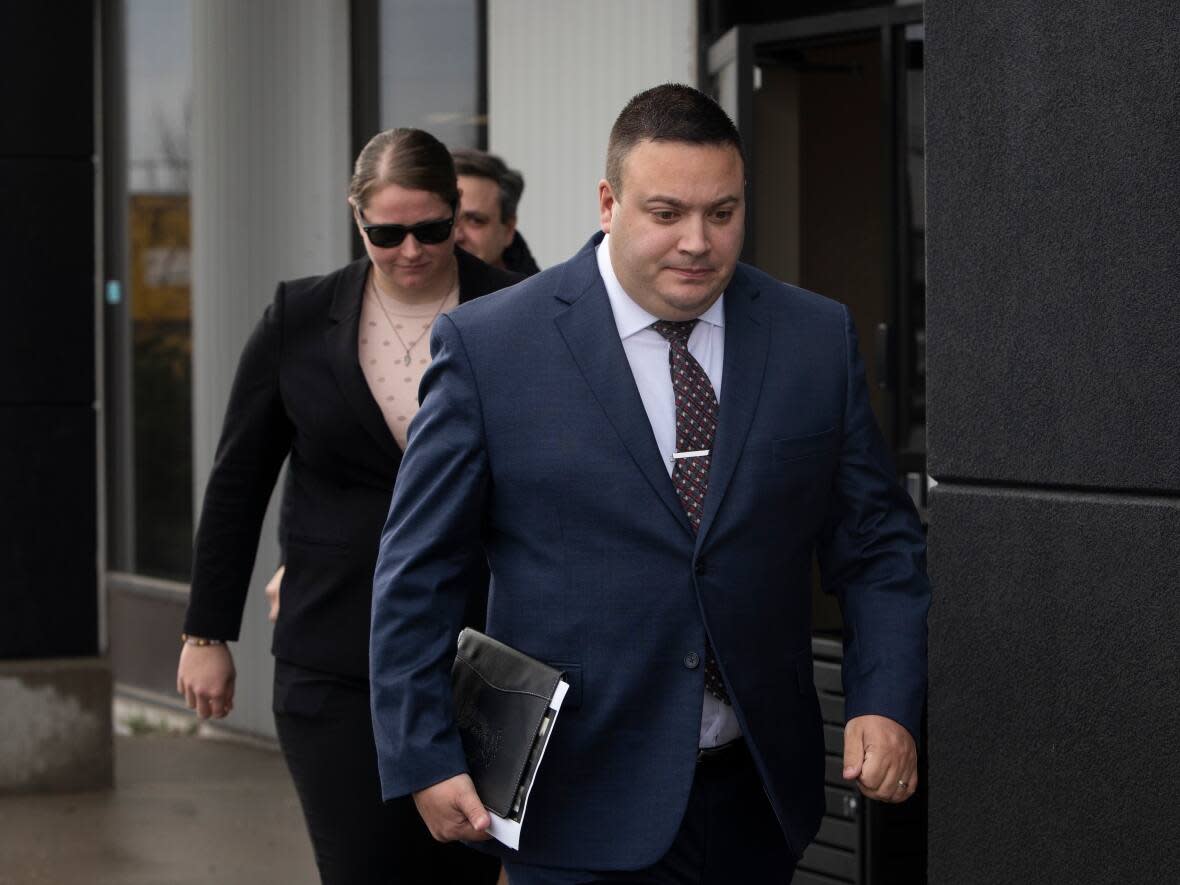RCMP constable tells jury he was scared at police operation before officers shot man at rest stop

An RCMP constable has told a jury that he was scared during a police operation in July 2018 at a rest stop just west of Whitecourt.
Const. Ian Paddick was cross-examined Friday at the trial of two of his fellow officers. Cpl. Randy Stenger and Const. Jessica Brown are charged with manslaughter in the shooting death of Clayton Crawford. Paddick, Stenger and Brown were based out of the Whitecourt attachment at the time of the incident.
The two accused have pleaded not guilty and their lawyers say the officers acted in self-defence. They fired 11 shots. Crawford was hit ten times.
"We're trained to stop the threat," Paddick testified.
On July 3, 2018, RCMP were on the lookout for a 26-year-old purple Dodge Durango. It was seen fleeing a shooting scene the day before in Valhalla Centre, a tiny hamlet west of Grande Prairie, Alta.
Crawford's girlfriend was hit in the leg by someone who fired a shot from outside their house.
The girlfriend told police she thought Crawford was the intended target over a drug debt.
She also said that Crawford fled the scene after the shooting in the purple truck.
When the purple truck was spotted at a rest stop west of Whitecourt, Paddick and the two accused approached the vehicle in a staggered formation. They were wearing body armour and their weapons were drawn.
At the trial on Friday, Paddick agreed with defence lawyer Robb Beeman that he had "significant concern" for his safety. He also agreed that those in the drug trade often don't have a concern for public safety, and could possibly be armed.
Paddick said he was "laser-focused" on what was going on in the truck because "his life and the lives of his colleagues depended on it."
He testified he was also concerned because there were other civilian vehicles at the rest stop.
When the three officers got close to the truck, they could see the driver was asleep. Paddick said he knocked on the window and told the driver he was under arrest.
At first, Crawford looked surprised and put his hands up, but Paddick testified the driver suddenly lowered his head and arms under the steering wheel. He said he was worried Crawford was reaching for a weapon.
"That is a very significant threat to the RCMP and to the public," Beeman said.
Paddick agreed.

Video from the RCMP vehicle dash-cams shows that Crawford started the car and almost immediately began to drive in reverse toward the officers.
"I knew we definitely were at great risk," Paddick testified. He and Brown were trying to scramble away from the truck.
When the first shot went off, the truck was still backing up.
A total of 11 shots were fired. An autopsy later showed that Crawford suffered ten gunshot wounds.
Paddick testified that it was a traumatic incident that he's thought about "quite a bit" since then.
Thigh injury fatal
After the shots were fired, Crawford drove out of the rest stop, crossed the highway and came to a stop at a treeline.

Two days later, medical examiner Dr. Bernard Bannach conducted an autopsy.
He testified Friday that Crawford died from blood loss as the result of multiple gunshot wounds.
The most serious injury was to Crawford's left upper thigh because it severed the femoral artery.
Bannach said with a life-threatening injury like that, he thought it would take between 30 seconds and two minutes to lose consciousness and less than five minutes for loss of life.
Crawford was also struck by bullets that grazed his head, shoulder and hand.
He had methamphetamine in his system at the time of his death, in amounts Bannach described as non-lethal. There was also cannabis in his system.
The trial is scheduled to last three weeks.
The jury has been told that Stenger and Brown will testify in their own defence.


